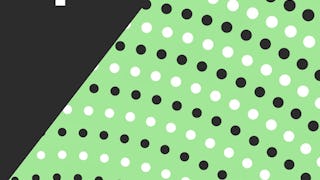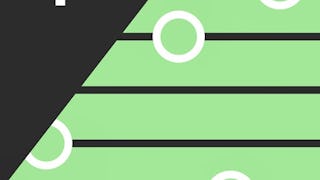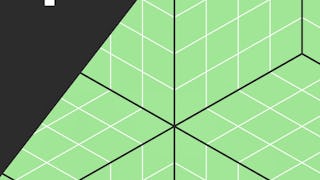In this course you will learn to create a photo-real game prop using modern game art production techniques. You will gather reference, generate a base model, create a high polygon model, bake details onto a low poly model, and then texture and present a final portfolio piece. This course is aimed at students who have some knowledge in 3d and game art and would like to learn more advanced techniques employed in the creation of modern game assets. We will be using Maya, Zbrush, Marmoset, and Substance Painter extensively throughout the course. When you are finished you will have your own model based of of a real-world prop suitable for use in modern game engines.

Enjoy unlimited growth with a year of Coursera Plus for $199 (regularly $399). Save now.

Current Gen 3D Game Prop Production
This course is part of Art for Games Specialization

Instructor: Andrew Dennis
7,639 already enrolled
Included with
(51 reviews)
Recommended experience
What you'll learn
Model accurate block-in, mid poly meshes
Create high poly models with a real world level of accuracy
Create game-ready low poly meshes for a real-time environment
Texture and render models to give them the appearance of photo-realism
Skills you'll gain
Details to know

Add to your LinkedIn profile
See how employees at top companies are mastering in-demand skills

Build your subject-matter expertise
- Learn new concepts from industry experts
- Gain a foundational understanding of a subject or tool
- Develop job-relevant skills with hands-on projects
- Earn a shareable career certificate

There are 6 modules in this course
To start the project we will choose an object to model, gather reference, and create a initial, rough block-in of the model. The goal is to understand as much about the object as we can before we start modeling. This will likely be the lightest workload of the course, so make sure to take the extra time to check over the essentials module and make sure you have mastered the skills covered there. Later weeks will be much more time-consuming.
What's included
9 videos2 readings3 assignments1 peer review
In this module you will work to create the form of your model. This mid-poly block-in will not be textured, nor smoothed into a high resolution model. The goal is to create a mesh that is accurate to your reference that can become the starting point for your high and low poly models. This is often the most challenging part of the process.
What's included
8 videos1 assignment1 peer review
In this module you will take the low poly block in and generate a high polygon mesh that is accurate to the real world model as possible. We will be using a combination of sub division modeling and . The sky is the limit with poly counts, this model will never be UV unwrapped, it will just be used to generate texture maps for the game-ready version.
What's included
10 videos2 assignments1 peer review
In this module you will take the mid-poly model from week 2 and reduce the geometry. This is the model we will be UV unwrapping and baking maps to. The goal for this model is to still achieve the silhouette of our object while using fewer vertices than the mid or high poly model.
What's included
9 videos1 assignment1 peer review
In this module you will take your low-poly model and add back the missing detail from the high-poly by baking texture maps. You will also use Substance Painter to add color, material, and micro-details not present in the high poly. This is where the model will start to become photo-real. The goal here is to take a well crafted model and use texture maps to bring it to life.
What's included
9 videos2 assignments1 peer review
This last week is set aside for you to spend more time polishing you model and going back to fix any issues that might have popped up during production. Often you will get to the end of a project and realize there were things you should have approached differently. Taking the feedback you received from the previous week's project, resubmit a final, portfolio ready version of your work. Our goal is to finish the course with the best possible looking final result.
What's included
4 videos1 assignment1 peer review
Earn a career certificate
Add this credential to your LinkedIn profile, resume, or CV. Share it on social media and in your performance review.
Instructor

Offered by
Explore more from Music and Art
 Status: Free Trial
Status: Free Trial Status: Free Trial
Status: Free Trial Status: Free Trial
Status: Free Trial Status: Free Trial
Status: Free Trial
Why people choose Coursera for their career




Learner reviews
51 reviews
- 5 stars
82.35%
- 4 stars
15.68%
- 3 stars
1.96%
- 2 stars
0%
- 1 star
0%
Showing 3 of 51
Reviewed on Aug 28, 2020
It was a really good experience and I learned a lot of 3D modeling, unwrap and texture also about how the game design work.-THANK YOU-
Reviewed on Dec 30, 2021
I was familiar with some of the aspects of game development but I still learned a ton of new things thanks to this course.
Reviewed on Aug 24, 2023
Awsome course with very easy way of understanding highly recommended to those who want to learn 3d modelling for games and movies
Frequently asked questions
The course is designed with these programs in mind due to their place as industry standard tools. You may use other tools if you wish (blender, gimp, etc) and apply the same techniques to those programs, but keep in mind the course was designed for Maya, Zbrush, Substance, and Marmoset
While making models for games is all about getting it into the game, presenting your work in the best possible light is a big part of art. For personal or portfolio projects you should always take the time to present them. A few hours of lighting and rendering in marmoset will get much better results than spending those hours further polishing your model and textures.
You will find the difficulty of your project has a lot to do with the complexity of the model you attempt to create. If it is your first time tackling these subjects I recommend keeping it simple for this course (a screwdriver rather than a car). You can always spend more time later improving and polishing your work after the course. Perfect is the enemy of done!
More questions
Financial aid available,
¹ Some assignments in this course are AI-graded. For these assignments, your data will be used in accordance with Coursera's Privacy Notice.





